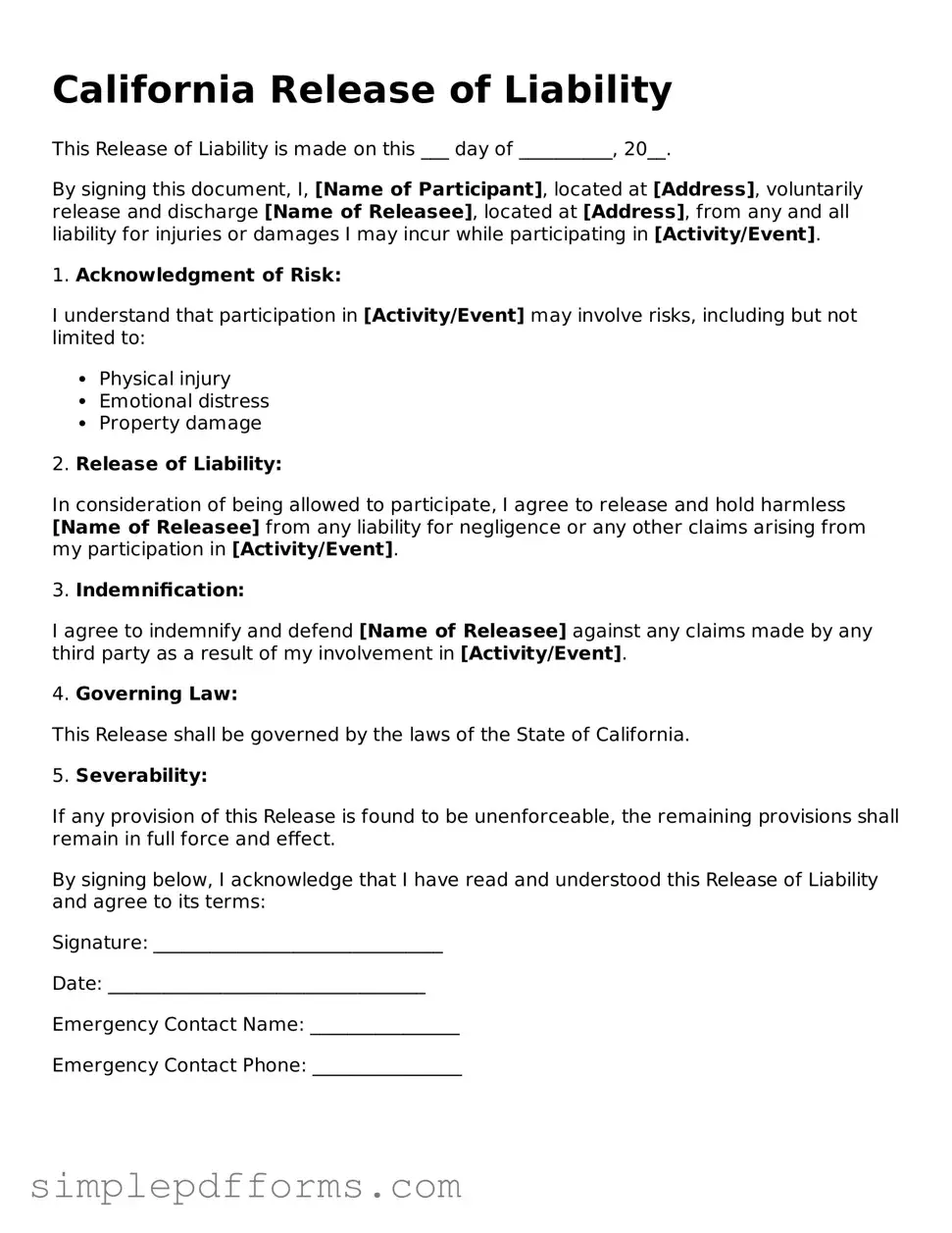California Release of Liability
This Release of Liability is made on this ___ day of __________, 20__.
By signing this document, I, [Name of Participant], located at [Address], voluntarily release and discharge [Name of Releasee], located at [Address], from any and all liability for injuries or damages I may incur while participating in [Activity/Event].
1. Acknowledgment of Risk:
I understand that participation in [Activity/Event] may involve risks, including but not limited to:
- Physical injury
- Emotional distress
- Property damage
2. Release of Liability:
In consideration of being allowed to participate, I agree to release and hold harmless [Name of Releasee] from any liability for negligence or any other claims arising from my participation in [Activity/Event].
3. Indemnification:
I agree to indemnify and defend [Name of Releasee] against any claims made by any third party as a result of my involvement in [Activity/Event].
4. Governing Law:
This Release shall be governed by the laws of the State of California.
5. Severability:
If any provision of this Release is found to be unenforceable, the remaining provisions shall remain in full force and effect.
By signing below, I acknowledge that I have read and understood this Release of Liability and agree to its terms:
Signature: _______________________________
Date: __________________________________
Emergency Contact Name: ________________
Emergency Contact Phone: ________________
